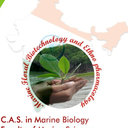Biomedical potential of silver nanoparticles synthesized from calli cells of Citrullus colocynthis (L.) Schrad.
Түлхүүр үгс
Хураангуй
BACKGROUND
An increasingly common application is the use of silver nanoparticles for antimicrobial coatings, wound dressings, and biomedical devices. In this present investigation, we report, biomedical potential of silver nanopaticles synthesized from calli extract of Citrullus colocynthis on Human epidermoid larynx carcinoma (HEp -2) cell line.
METHODS
The callus extract react with silver nitrate solution confirmed silver nanoparticles synthesis through the steady change of greenish colour to reddish brown and characterized by using FT-IR, AFM. Toxicity on HEp 2 cell line assessed using MTT assay, caspase -3 assay, Lactate dehydrogenase leakage assay and DNA fragmentation assay.
RESULTS
The synthesized silver nanoparticles were generally found to be spherical in shape with size 31 nm by AFM. The molar concentration of the silver nanoparticles solution in our present study is 1100 nM/10 mL. The results exhibit that silver nanoparticles mediate a dose-dependent toxicity for the cell tested, and the silver nanoparticles at 500 nM decreased the viability of HEp 2 cells to 50% of the initial level. LDH activities found to be significantly elevated after 48 h of exposure in the medium containing silver nanoparticles when compared to the control and Caspase 3 activation suggested that silver nanoparticles caused cell death through apoptosis, which was further supported by cellular DNA fragmentation, showed that the silver nanoparticles treated HEp2 cells exhibited extensive double strand breaks, thereby yielding a ladder appearance (Lane 2), while the DNA of control HEp2 cells supplemented with 10% serum exhibited minimum breakage (Lane 1). This study revealed completely would eliminate the use of expensive drug for cancer treatment.



